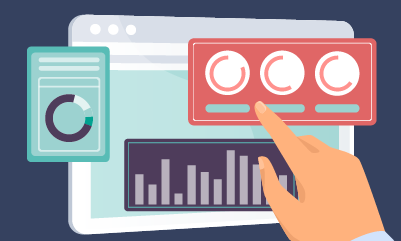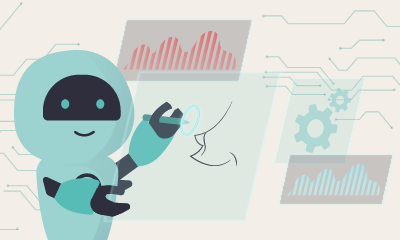Benefits of HR digitalisation with CHEQ, the multiplatform internal communication tool
Digitalisation of HR processes is not the future, it is the present
The essence of the 21st century is digitalisation and this is especially true since the start of the pandemic. The digitisation of HR processes has become an absolute necessity for working efficiently. The era of stamped paper is long gone, but there is no point in lamenting the romantic elements of past times, as digitised processes are not only more accurate and convenient but also save an incredible amount of time and therefore money.
The beauty of digitalisation is that it does not require a significant investment in infrastructure or a lengthy learning and adaptation process. Our internal communication solution, CHEQ, runs on even the cheapest smartphone, tablet or computer and can be implemented in a few hours, saving weeks of working time per year.
In various manufacturing, logistics, commercial or agricultural businesses, the problem is that the make-up of the workforce is very diverse, their digital affinities are different and many do not use digital communication tools. But by now almost everyone has at least an entry-level smartphone. There is no stopping the full digitalisation of HR processes. From this point on, the company is ready to start managing internal communication (both ways) with unprecedented efficiency, revving up previously cumbersome HR processes, and fostering a higher level of employee engagement and willingness to identify with the company.
Let’s look at the benefits of CHEQ beyond efficiency:
- Direct, undistorted information transfer. Instant and unbiased information flow between management and employees. No intermediaries, no misunderstandings, no gossip.
- Everything can be accurately measured and traced. The system remembers and stores all information submitted. (Except, of course, the identity of the submitter in the case of anonymous employee reports.) Stored data can be retrieved and processed at any time. With a few clicks of a button, statistics can be generated on almost anything.
- Instantly visible feedback about the employees receiving and reading the message sent to them. With digital messages, the “read rate” is typically much higher than of those sent on traditional channels. No wonder: hungry for news, we are used to check our messages when our phone beeps. Even the ones from the employer.
- The system allows two-way communication, whether it’s a quick questionnaire, a leave request sent in by an employee, an emergency report, or an anonymous report of corruption or workplace abuse. CHEQ is not only a mouthpiece for management, it can also be used by employees to communicate – which also greatly helps its implementation. Goodbye cardboard “idea box” in the dressing room!
- Not only can it convey visual and textual information, but it can also be used to send out official documents such as payslips, or even video messages to all colleagues.

Multiplatform solution
One of the biggest advantages of CHEQ, apart from its efficiency and ease of use, is that it is can be used on multiple platforms. Notably, it is available on Viber and Microsoft TEAMS, as well as on the CHEQ app itself. Both Viber and TEAMS can be used on a tablet or computer in addition to a smartphone. Each platform is fully compatible with the other, meaning that even within a single company: for instance, it is possible for some employees to use TEAMS on a laptop, while others use Viber on a tablet and other colleagues use CHEQ’s own app on their smartphone. Each platform offers all the features, there is no difference.
This is important because there can be differences in the way individual employees use their devices within a company. For example, office staff use computers, while field representatives may use tablets and physical workers can use phones. This is not an obstacle for CHEQ, everyone can use the most convenient and accessible solution, which is the biggest advantage of multiplatform.
Digital transition
At the start of the digital transition, it’s worth assessing the digital affinity of the employees in your company: what kind of device they have, whether they have any kind of internet subscription on their mobile, etc. Fortunately, Viber works well even on the cheapest entry-level phones.
After the survey, it’s worth thinking about what HR processes you want to digitise. The biggest efficiency improvements will be in digitising repetitive tasks and administrative processes that otherwise require face-to-face contact.
Several days of work can be saved by digitising payroll documents, as by having all employees receive their monthly documents through the app, time-consuming processes such as queuing, signatures, printing and more can be avoided. Additionally, archiving paperwork can be done with a few clicks of a button. The process also works the other way round, allowing employees to submit leave requests, call in sick or take care of other issues.
Several days of work can be saved by digitising payroll documents, as by having all employees receive their monthly documents through the app, time-consuming processes such as queuing, signatures, printing and more can be avoided. Additionally, archiving paperwork can be done with a few clicks of a button. The process also works the other way round, allowing employees to submit leave requests, call in sick or take care of other issues.
Digital HR can also be an excellent and extremely fast tool to conduct company-wide surveys and brainstorming. The employee receives a message with the questions, can answer them with a few clicks of a button, and their answer remains completely anonymous. Because of this, the willingness to respond is much higher. A summary of the survey can also be created with a few clicks on the admin interface.
How can you be sure that you need CHEQ?
From what has been described so far, it is already outlined what CHEQ can be used for: to take internal communication within a company to a new level. It will accelerate company processes, increase acceptance and employee involvement, while administrative burdens and costs will be reduced.
Generally speaking, the time required to implement the entire system, i.e. the digital transformation of HR, can be completed in no more than 20 hours. The money invested in the system will pay for itself in a few months and from then on it can be seen as a clear saving.

Who do we recommend CHEQ to?
We recommend CHEQ to businesses where some of the employees are difficult or impossible to reach through digital channels. This is typically the case for companies with physical workers. CHEQ’s digital HR system is also a great help in cases where colleagues are spread over several sites, or where some of them typically do not work in the company building but are often on the road, such as field representatives or service, courier or sales agents.
In the case of interim staff, there is essentially no other option than CHEQ, where employees are dedicated to working for different companies, while as employees of the company that hires them out, they expect and receive the vast majority of information from them.
Another important application could be uniting employees at companies where they typically work in different environments and on different devices. The multi-platform nature of CHEQ is a great advantage here: e.g. physical workers access it on Viber and phone, field representatives on an app and tablet, and office workers on their laptops and Microsoft TEAMS.
In terms of headcount, CHEQ is worth using with even a few dozen colleagues, but for companies with hundreds or even thousands of employees, it is indispensable.
CHEQ is already an indispensable everyday tool as the powerhouse of digital HR processes. The pandemic situation has fostered the spread of home office worldwide, and there are many indications that even after the pandemic has passed, more and more people will continue to work from home, either partially or fully. The home office is another argument in favour of using CHEQ, as it allows all employees to feel like they are in a “virtual office”, at least as far as HR matters are concerned.


